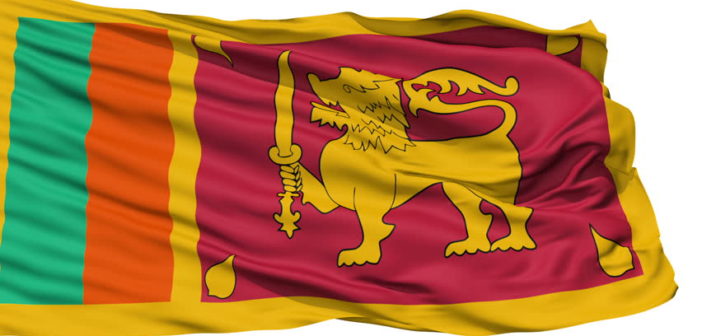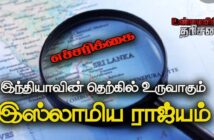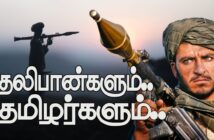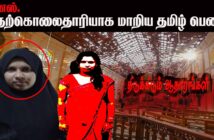The ‘Lion Flag’ of the last King of Kandy, was hauled down when the Kandyan Convention was signed on March 2, 1815. Though it was buried in the sand of history, E. W. Perera discovered the banner at the Chelsea Hospital and made reference to it in his book on ‘Sinhalese Banners and Standards’.
- R. Jayewardene was the first to proclaim the use of the Lion Flag as the national flag of Ceylon. Addressing the State Council in September 1945. He said ‘It is the flag that held sway over three portions of Lanka – Ruhuna, Rajarata and Mayarata. It is a yellow flag with a lion in the centre’.
JR drafted a motion and with his machiavellian tactics persuaded Batticaloa MP A. Sinnalebbe to present it in the House of Representatives on January 16, 1948. It read: “That this House is of opinion that the Royal Standard of King Sri Wickrama Raja Sinha depicting a yellow lion passant holding a sword in its right paw on a red background, which was removed to England after the Convention of 1815, should once again be adopted as the official flag of Free Lanka”.
Prime Minister D. S. Senanayake: “It is a well known fact this flag happens to be the flag of the last King of Kandy, and we all know that the last King of Kandy was a Tamil. When we lost our country, when the people chose the King of England as their Sovereign, this was the flag of the last Kandyan King who was dethroned, that was pulled down. Now that England is transferring sovereignty to the people of this Island, I want England also to replace that flag along with the sovereignty that they are giving us back. It is for this main reason that we intend hoisting this flag on Independence Day.
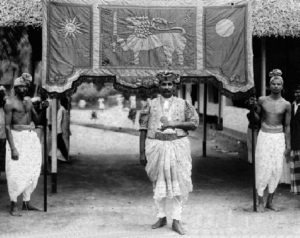
“It was really a surprise to me to find my good friend, the Muslim Member, trying to show that we want to impose something on them. All that we want them to realize is that when Ceylon lost its sovereignty, it lost its flag, and that when the people are to regain sovereignty, that flag must be hoisted. During the time of Sri Wickrama Raja Sinha there were Tamils, Sinhalese and Muslims living in the Kandyan Provinces and they all lived as one people. It is true that the low-country lost its sovereignty long before that: it is true that Jaffna lost its sovereignty long before that: the Kandyans lost their sovereignty last. But when the people who graciously give us back our freedom are the people, who are giving us the flag, let us have it and not the flag of some other people who conquered us before them”.
National Flag Committee
On February 12, 1948 the Lion Flag that was hoisted by the Prime Minister in the presence of the Duke of Gloucester was identical with the one hauled down at the same spot on March 2, 1815.
On March 6, 1948 the Prime Minister appointed a committee headed by S. W. R. D. Bandaranaike and including Sir John Kotelawala, J. R. Jayewardene, T. B. Jayah, Dr. L. A. Rajapakse, G. Ponnambalam, and Senator S. Nadesan to advise him on the question of National Flag.
The committee called for the views of the public. Their general consensus was that the Lion Flag should be the National Flag with suitable modifications made therein.
GG’s compromise formula
The committee had deliberations for about two years. Yet it could not achieve unanimity. It wanted to report the deadlock to the Prime Minister. However, Ponnambalam who came down to ‘responsive co-operation’ after his famous ‘fifty fifty’ demand by joining the Government of Senanayake in August 1948 as Minister of Industries, Industrial Research and Fisheries, proposed a compromise formula which said that two strips of saffron and green should be adopted to the Lion Flag in the proportion of 1:1:5. All the members except Nadeson accepted the formula.Thus on February 13, 1950 the committee approved the Lion Flag incorporating modifications suggested by GG.
Nadesan’s report
In the context of the present political turmoil in our country, the dissenting Report by Nadesan becomes an essential reading.
Senator Nadesan never indulged in communal politics. His views are pregnant with cogent and valid reasons for the establishment of national unity.
He said in his dissenting report that “a national flag, apart from giving an honoured place to all communities in the flag, must be a symbol of national unity.
“In my view, this design if adopted far from being a symbol of national unity will be symbol of our disunity. Once the committee agreed that the national flag should be devised by modifying the Lion Flag, one would have thought that any strips adopted for the purpose of satisfying the minorities will be integrated with the Lion Flag and that these strips will not be an appendage to the Lion Flag. Anyone looking at the proposed flag will see that the Lion Flag is preserved in all its integrity and outside that Flag two strips are allotted to represent the minorities. After all a flag is a symbol and the symbol must at least effectively show the unity and strength of the nation”.
He recommended the elimination of the yellow border which according to the proposed flag separated the saffron and green strips from the red strip. Then, the flag would comprise green, saffron and red strips in the proportion of 1:1:5 with the Lion on the red strip and ‘with the yellow border surrounding the entirety of the flag and encompassing the two strips within the yellow border’.
This could be the barest minimum concession that would have been made to minority sentiment if one desired a national flag, which would symbolize the ideal of unity.
He referred to other countries where national flags have been designed not by superficially adding a strip to another flag outside the flag, but by making the strips part and parcel of the flag. He believed that his suggestion made no entailment to sacrifice any of the vital part of the Lion Flag and could not offend Sinhalese sentiments. It would only provide a method of evolving a flag, which may be called ‘national’ by all the inhabitants of Sri Lanka for all times.
He posed a question in his report: “Why then do we want to segregate the saffron and green strips, which are provided to satisfy minority sentiments outside the borders of the Lion Flag?
A reference to the National Flag has, for the first time, been made in the Constitution of 1978. Article 6 states “the National Flag of the Republic of Sri Lanka shall be the Lion Flag depicted in the Second Schedule”.
Constitution
The National Flag in the Second Schedule to the Constitution has four bo-leaves in the four corners of the red background of the Lion Flag. The four bo-leaves were not in the Original Design of the Flag, marked Plate XV and signed by all the members except Nadesan. The majority of the members of the National Flag Committee had recommended that the flag upon meticulous examination of the public views and study by themselves of the various aspects and issues involved therein. Notwithstanding the acceptance of the flag by the Committee JR made the change without a word of general discussion or deliberation at the Constituent Assembly.
The Lion Flag has acquired historical recognition as a national emblem. It is nothing but right that every one irrespective of ethnic feeling should feel proud of it. Bo-leaves indicate that Sri Lanka is a Buddhist country. No reasonable person would object to such a perception. But JR who frequently spoke of embracing the minority, felt reticent to correct the Flag as suggested by Senator Nadesan in his dissenting report. As in the manner he brought the bo-leaves into the Flag he could have integrated the saffron and green strips with the lion. JR could have brought about a national unity by removing the yellow strip that lays between the Lion, which indicates the Sinhalese and the saffron and green strips, indicating the minorities in the Flag. He did not do it.
It is unfortunate that the leaders of the majority fail to appreciate that when the Lion Flag was used as a distinctive flag, anyone looking at it would think that the minorities are given a place outside the Lion Flag and they have been given a subordinate position in the flag. The yellow border that runs round the Lion Flag effectively separates the two strips denoting to satisfy the sentiments of the minorities.
Separation of it promotes an effective division in the National Flag itself. It is the division that all right thinking people of this country want to eradicate from our national life.
Will there ever be enough courage and wisdom among the leaders of the majority to rectify the National Flag on the lines of thinking of Senator Nadesan? Will they make Sri Lanka an Asian Switzerland?
(Thanks: C. V. Vivekananthan)

